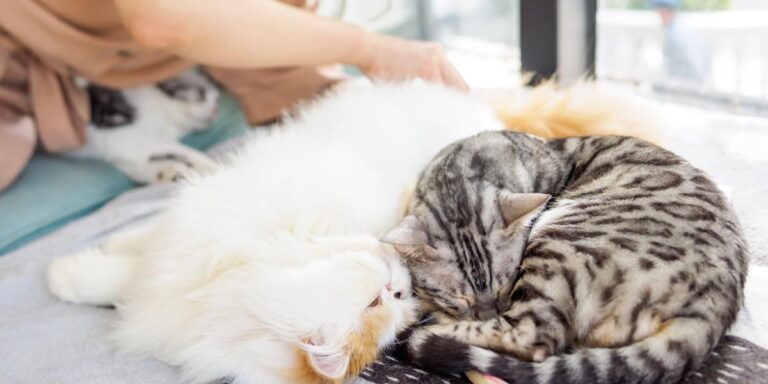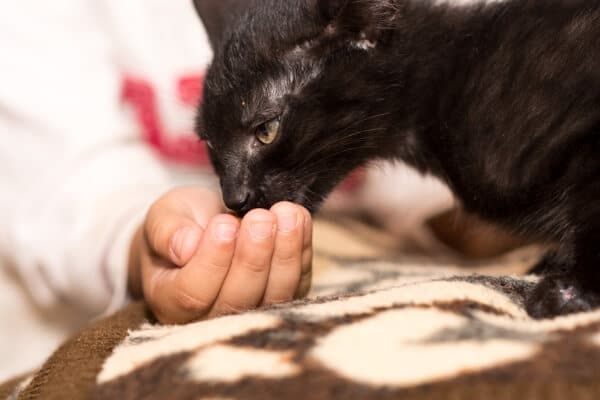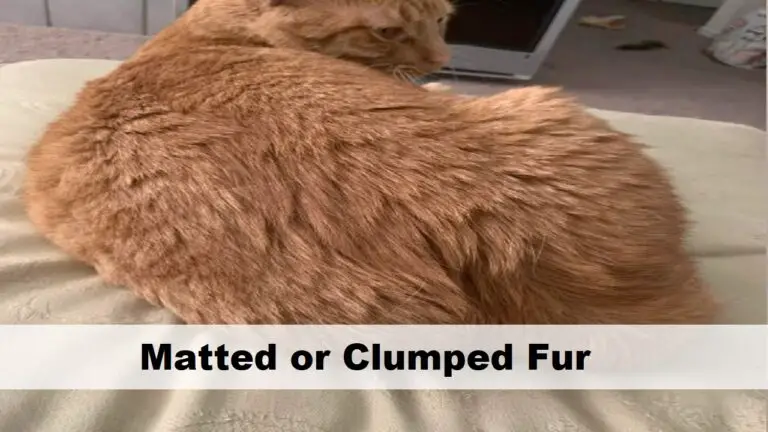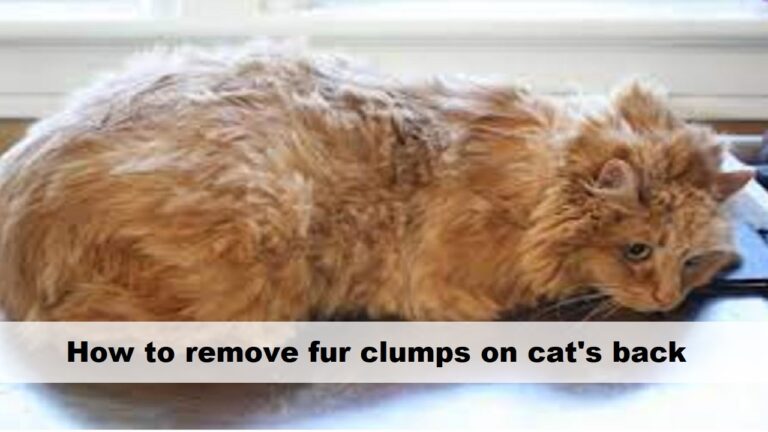How Long Does It Take For A Dead Cat To Start Smelling?
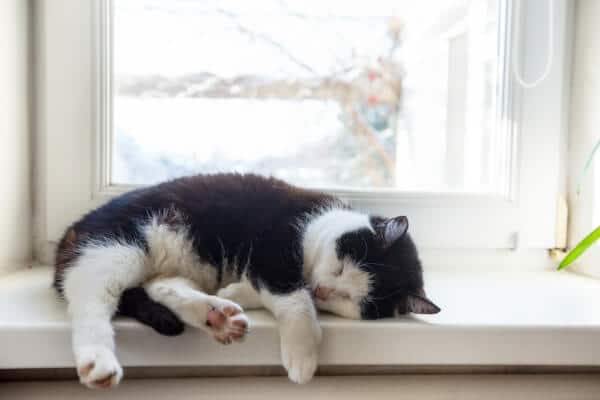
As feline parents, it’s crucial to acknowledge not heartwarming moments of joy and companionship we have had with our cats, but also the difficult realities that follow their final breaths. Well, it’s normal to feel like spending more time or mourning your cat for some time before they are finally buried or cremated. A question that usually pops up at times is how long till your deceased cat starts smelling from decay?
When a cat sadly passes away, an odor typically begins to emanate within one to three days under average indoor conditions. Various factors can affect this timeline, including environmental conditions like temperature and humidity. This odor is a result of decomposition, where the body’s tissues are broken down by bacteria and enzymes in a process known as putrefaction. However, you can preserve a dead cat’s body indefinitely by freezing it, just like you would, a chicken or beef.
Despite the morbid nature of the topic, it’s more relevant than one might think. For instance, in forensic investigations, understanding the timing and stages of decomposition can provide crucial information about the time of death, while for pet owners, this knowledge can help them better manage and understand the sad event of their pet’s passing. So, while it’s not a subject we often discuss over dinner, it holds significant practical value.
Read Also: Why Did My Cat Die With His Eyes Open? Is It Normal?
Jump to Section
How Long Till A Deceased Cat Starts Emitting Odor?
The length of time it takes for a deceased cat to start emitting an odor can vary between one to three days. Firstly, environmental conditions play a significant role. Higher temperatures hastens the decomposition process and, consequently, the release of odors. Additionally, the cat’s size and body composition can influence the rate of decomposition. For instance, a larger cat may decompose more slowly than a smaller one due to the difference in mass and surface area.
In general, within a few hours to a day after death, the body of a deceased cat will begin to change as a result of decomposition. The process starts with autolysis, which is the breakdown of cells and tissues by enzymes released within the body. As this process continues, bacteria and microorganisms present in the body will begin to break down the organic matter further, leading to the release of foul-smelling gasses.
Typically, within 24 to 72 hours after death, a deceased cat will start emitting an odor. Initially, the smell may not be overpowering, but it will gradually intensify as decomposition progresses. It’s important to note that the presence of flies or other insects around the body can be an indication that decomposition has started.
What Happens To A Cat’s Body After Death?
After a cat’s death, several natural processes take place within its body as it undergoes decomposition. Here’s a general overview of what happens to a cat’s body after death:
1. Pallor Mortis
Pallor Mortis is the first stage that a cat’s body undergoes after death. In this phase, the body loses its normal coloration and starts to appear unusually pale. This is because once death occurs, the heart ceases to pump blood, and circulation comes to a halt. Without this active movement, gravity takes over, causing the blood to pool in the lower areas of the body.
The initial paleness can be most noticeable on the gums or any other typically pink areas, as the lack of circulating blood causes these areas to lose their natural hue. The onset of pallor mortis is rapid, often starting within the first 15 to 20 minutes after death.
2. Algor Mortis
Following death, the body gradually cools down to reach the temperature of its surroundings. This cooling process is called algor mortis and is influenced by factors such as ambient temperature and body size. For a cat, the small body size and thin fur undergo a quick cooling process compared to a big body size.
3. Rigor Mortis
Within a few hours after death, the cat’s muscles start to stiffen due to the depletion of ATP (adenosine triphosphate), a compound responsible for muscle relaxation. Rigor mortis sets in, beginning with the jaw and neck muscles and then progressing to other parts of the body. Rigor mortis peaks around 12 to 24 hours after death and then gradually subside over the next 24 to 48 hours.
Read Also: How Can You Tell From Rigor Mortis How Long A Cat Has Been Dead?
4. Autolysis
As the cat’s body cells lose their ability to function, a process called autolysis occurs. This involves the breakdown of cells and tissues due to the release of enzymes from within the cells. Autolysis leads to the deterioration of organs and tissues, causing the cat’s body to undergo gradual decomposition.
5. Putrefaction
Putrefaction is the stage of decomposition where bacteria and other microorganisms begin to break down the cat’s tissues, releasing various gases and substances in the process. This results in the characteristic odor associated with decaying bodies. The gases produced can cause the body to bloat and may result in the rupture of the skin in advanced stages.
6. Decomposition
Over time, the cat’s body decomposes further, with the breakdown of soft tissues, such as muscles and organs. This process is facilitated by various factors like temperature, humidity, and the presence of scavengers. Insects, such as blowflies, beetles, and maggots, may also contribute to the decomposition process by feeding on the decaying remains.
It’s important to note that the speed and progression of these processes can vary depending on factors such as temperature, humidity, access to air, and the presence of scavengers.
How Long Does It Take For A Dead Cat To Start To Decompose?
For a cat’s body, under very specific conditions, the complete decomposition from the moment of death to the state where only skeletal remains are left can indeed span a broad timeframe, from 6 months to as long as 15 years. This process depends on several factors, such as environmental conditions, temperature, humidity, and the presence of scavengers or insects. The decomposition process can be divided into several stages:
1. Fresh Stage
This stage starts immediately after death. The cat’s body starts to cool down, and rigor mortis, the stiffening of muscles, sets in. The cat’s body may appear intact during this stage.
2. Bloat Stage
After a day or two, gases produced by bacteria inside the body begin to accumulate, causing bloating. The body starts to swell and may become discolored due to the release of decomposition byproducts.
3. Active Decay Stage
This stage typically occurs within the first week after death. The body undergoes significant changes as bacteria and other microorganisms break down the tissues. The cat’s body may show signs of deterioration, such as a foul odor and liquefaction of organs.
4. Advanced Decay Stage
After a few weeks, the body continues to decompose, and most soft tissues have decayed or been consumed by scavengers and insects. The remaining bones and hair may be the only recognizable parts of the cat’s body.
5. Dry Remains Stage
Over a longer period, the remaining bones and other hard tissues gradually dry out and may become brittle. Eventually, all that remains are the skeletal remains of the cat.
What To Do With The Remains Of A Deceased Cat?
When a beloved pet cat passes away, it can be a difficult and emotional time for its owners. After the cat’s passing, one of the decisions that need to be made is what to do with the remains. Here are several options:
1. Burial
Many people choose to bury their deceased cats in a designated area such as a pet cemetery, a backyard, or a special garden. It allows for a personal and meaningful farewell, and some owners may choose to mark the grave with a headstone or a memorial.
2. Cremation
A cremation is a popular option for handling the remains of a deceased cat. It involves the process of reducing the body to ashes through high-temperature burning. There are two main types of cremation: communal and private. In communal cremation, multiple pets are cremated together, and the ashes are not returned to the owner. In private cremation, the cat is cremated individually, and the ashes are given back to the owner in an urn or another container.
3. Memorialization
Some cat owners choose to keep the ashes or other meaningful mementos of their deceased cat as a way to remember and honor their pet. Ashes can be kept in decorative urns or even transformed into memorial jewelry, paintings, or other personalized keepsakes. There are numerous creative options available to help preserve the memory of a beloved cat.
How Long Can I Wait To Bury My Cat?
Generally, it’s advisable to bury your cat within 24 hours if possible. This time frame minimizes the potential health risks associated with decomposition and helps ensure a dignified farewell for your pet.
While this is the general recommendation, it’s important to note that circumstances can affect this timeline. Cooler temperatures can slow down the decomposition process, buying you a little more time, whereas warmer temperatures can speed it up. If circumstances prevent you from burying your cat right away, consider temporary measures such as storing the body in a cool and secure place like a freezer.
However, local regulations may dictate how and when you can bury your pet. Certain municipalities have restrictions on backyard pet burials, requiring specific depths for burial or particular locations. So, while handling your pet’s remains with care and speed, it’s essential to familiarize yourself with local laws to ensure you’re complying with them.
How To Preserve A Cat’s Body Before Burial Or Cremation?
After the heartbreaking experience of losing your beloved feline friend, you’ll want to ensure that the body is carefully preserved before burial or cremation. First, make sure to wear rubber gloves for your protection and to maintain cleanliness. If there are any bodily fluids present on your pet, you’ll need to gently cleanse them away. Then, tenderly wrap the cat in a soft blanket, towel, or sheet. This process can be emotionally draining, so you may want to consider asking for support from a trusted friend or neighbor.
The preservation process continues by placing your pet’s body in a plastic bag that’s large enough to comfortably fit them. This could range from a large resealable bag to a more substantial garbage bag. Ensuring that the bag is properly sealed is crucial.
Your next step is to find an appropriate cool storage space, like a freezer. If there’s space in your freezer or you don’t deem using your household freezer appropriate for this purpose, look into your local vet’s facilities – many of them have a freezer designed specifically for this purpose. By preserving the body in this way, the remains can be stored at freezing temperatures for up to a year. This approach provides you with sufficient time to decide on the final arrangements without feeling rushed or under pressure.
How To Tell How Long Your Cat Has Been Dead?
When it comes to determining how long a cat has been deceased, certain physical signs and changes can provide crucial clues. These indicators include body temperature, stiffness (known as rigor mortis), and, to some extent, body size. While there’s no 100% precise system for pinpointing the time of death, the interplay of these factors can give a rough timeline.
Body warmth is an immediate and tangible sign to gauge the recentness of a cat’s passing. A cat’s body typically retains warmth for up to three hours post-death. Hence, if you discover the body and it still feels warm to touch, and there is no noticeable stiffness, it’s likely that death occurred within the past three hours.
However, if the body feels warm yet exhibits stiffness, the timeline extends. The stiffness is due to rigor mortis, a natural process that typically starts to set in three to four hours after death. In smaller bodies like that of a cat, rigor mortis is relatively quick to develop, reaching full rigor within approximately six hours. So, a warm and stiff body usually suggests that death occurred somewhere between three to eight hours earlier.
As time progresses, the body loses its residual warmth and begins to cool, a process known as algor mortis. If you find the cat’s body cold and stiff, this indicates that death occurred 8 to 36 hours prior.
Beyond this point, if the body is cold and no longer stiff, the death likely occurred more than 36 hours earlier. Rigor mortis is a temporary condition and usually subsides within 24 to 36 hours after death. A cold, limp body signifies that death took place quite some time ago, past the stages of warmth and rigor.
Remember, these estimations are not foolproof and can be influenced by numerous factors. In colder environments, the body may cool faster, whereas, in warmer settings, decomposition processes could be accelerated.
Read Also: My Cat Died In His Sleep. [Why? & Was It Peaceful?]
How Can I Bury A Cat If I Have No Money?
If you’re dealing with the sad loss of a cat and are facing financial constraints, you might be wondering about the options available to you. One of the simplest and most cost-effective methods is to bury your cat in your backyard. This allows you to choose a quiet, peaceful spot for your feline friend to rest. It’s worth noting, however, that some municipalities have regulations concerning home burials for pets, so it’s a good idea to check local laws first.
Should you not have access to a suitable space in your backyard, consider reaching out to a trusted friend or family member who does. Most people understand the deep bond between a pet and its owner and may be willing to provide a small burial plot in their garden. Remember, it’s essential to handle this conversation with sensitivity and respect for their space.
If a backyard burial isn’t possible, don’t hesitate to approach your veterinarian for assistance. Vets are part of your pet’s life journey and understand the emotional impact of losing a pet. They might offer low-cost or even free solutions for clients facing financial difficulties. Some clinics might have arrangements with local pet cemeteries or crematoriums, or they could guide you toward organizations that help with pet burial or cremation costs. Facing the death of a beloved pet is challenging, and it’s okay to seek help and explore these options when necessary.
Do Cats Still Move After Death?
While a cat’s muscles may still exhibit residual movement or twitch immediately after death, these are involuntary reactions caused by electrical impulses and do not indicate conscious or intentional movement. These movements, known as postmortem muscle spasms, occur due to the buildup of chemicals and the release of stored energy within the muscles. They are temporary and typically subside within a short period.
The phenomenon of postmortem muscle spasms is not exclusive to cats but can occur in various other animals as well. It is important to note that these movements should not be confused with signs of life or suggest that the cat is still alive in any way. They are purely physiological responses and do not imply any form of consciousness.
Final Thoughts
The grim but necessary fact is that the scent associated with the decomposition of a deceased cat typically becomes noticeable within one to three days. This timeframe isn’t absolute but is influenced by a variety of factors such as environmental conditions and the cat’s health at the time of death.
Acknowledging these factors helps pet owners navigate this challenging time, while and helps them to understand the importance of taking swift action following a pet’s death. The sooner the remains are properly taken care of, the easier it is to manage the situation, reducing potential health risks and distress caused by the emergence of odors.
Although difficult as it might be, understanding these aspects empowers pet owners to accept the inevitable with grace and respect for their beloved companions. Even amidst the sadness of losing your feline companion, it’s important to take solace in the bond shared, the moments of joy experienced, and the meaningful impact your pet had in your life.
Read Also: Cat Died Giving Birth (10 Reasons & How To Feed Kittens)
Read related posts about

